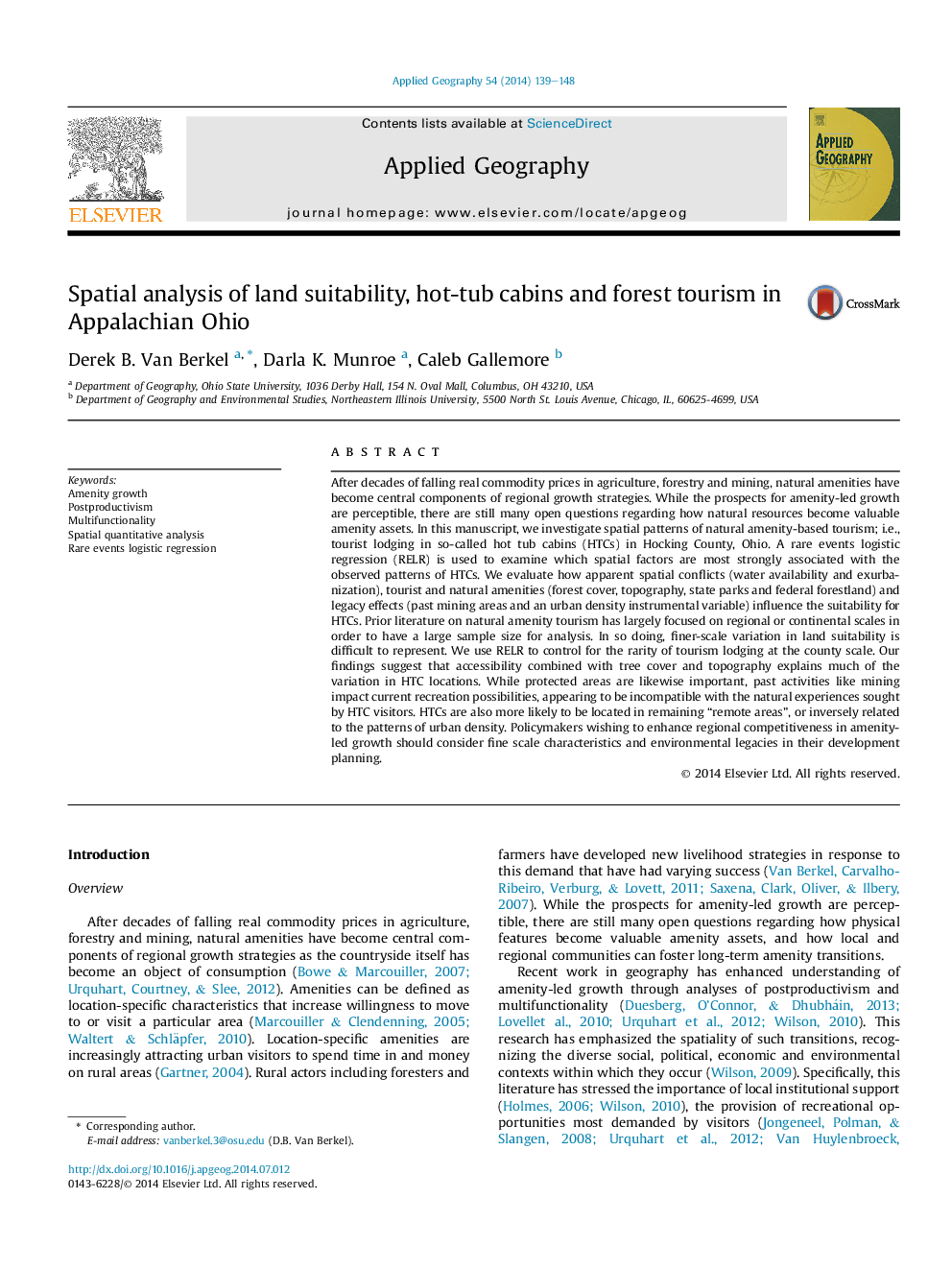| کد مقاله | کد نشریه | سال انتشار | مقاله انگلیسی | نسخه تمام متن |
|---|---|---|---|---|
| 83290 | 158712 | 2014 | 10 صفحه PDF | دانلود رایگان |
• An analysis of amenity landscape is done using spatial quantitative analysis of the location of hot tub cabins (HTCs).
• A rare event logistic regression model proved to be capable of robust estimates despite low occurrence of HTC.
• Findings implicate different factors that influence HTC locations at the sub-regional scale.
After decades of falling real commodity prices in agriculture, forestry and mining, natural amenities have become central components of regional growth strategies. While the prospects for amenity-led growth are perceptible, there are still many open questions regarding how natural resources become valuable amenity assets. In this manuscript, we investigate spatial patterns of natural amenity-based tourism; i.e., tourist lodging in so-called hot tub cabins (HTCs) in Hocking County, Ohio. A rare events logistic regression (RELR) is used to examine which spatial factors are most strongly associated with the observed patterns of HTCs. We evaluate how apparent spatial conflicts (water availability and exurbanization), tourist and natural amenities (forest cover, topography, state parks and federal forestland) and legacy effects (past mining areas and an urban density instrumental variable) influence the suitability for HTCs. Prior literature on natural amenity tourism has largely focused on regional or continental scales in order to have a large sample size for analysis. In so doing, finer-scale variation in land suitability is difficult to represent. We use RELR to control for the rarity of tourism lodging at the county scale. Our findings suggest that accessibility combined with tree cover and topography explains much of the variation in HTC locations. While protected areas are likewise important, past activities like mining impact current recreation possibilities, appearing to be incompatible with the natural experiences sought by HTC visitors. HTCs are also more likely to be located in remaining “remote areas”, or inversely related to the patterns of urban density. Policymakers wishing to enhance regional competitiveness in amenity-led growth should consider fine scale characteristics and environmental legacies in their development planning.
Journal: Applied Geography - Volume 54, October 2014, Pages 139–148
